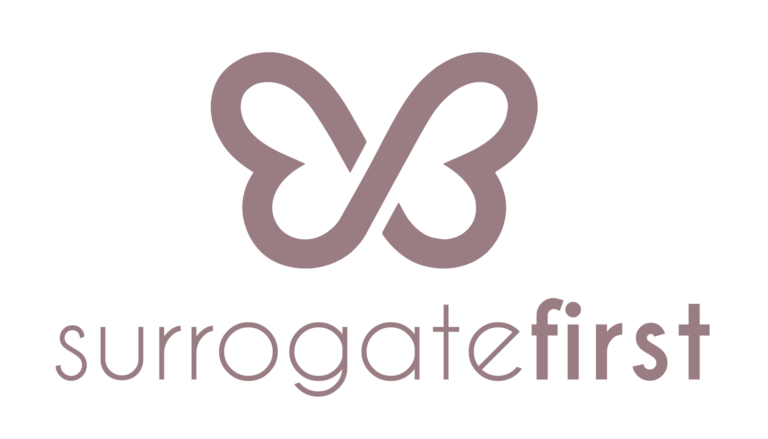For mothers of babies born via surrogacy, the journey to parenthood often differs from traditional paths. One unique opportunity that many intended mothers explore is induced lactation, a process that allows them to breastfeed their newborn despite not carrying the pregnancy themselves. While this process requires time, dedication, and medical guidance, it can be an incredibly rewarding experience for those interested in this approach to bonding with their surrogate-born baby.
What is Induced Lactation?
Induced lactation is a method that allows women who haven’t been pregnant to produce breast milk. This process is particularly relevant for:
- Intended mothers of surrogate-born babies
- Adoptive mothers of infants
- Mothers who need to re-lactate after a period of separation from their child
- Same-sex couples where the non-gestational mother wishes to breastfeed
The goal of induced lactation is to simulate the hormonal changes that occur during pregnancy and childbirth, ultimately resulting in milk production. This process mimics the natural progression of hormones that typically prepare the breasts for lactation during the course of a pregnancy.
The Science Behind Lactation
To understand induced lactation, it’s helpful to know how lactation naturally occurs. During pregnancy, hormones such as estrogen, progesterone, and prolactin prepare the breasts for milk production. After birth, the rapid drop in estrogen and progesterone, coupled with continued high levels of prolactin, triggers the onset of milk production.

In induced lactation, medical interventions aim to replicate this hormonal dance, fooling the body into believing it has gone through pregnancy and is ready to produce milk for a baby.
The Process of Inducing Lactation
Inducing lactation is a gradual process that typically begins several months before the expected arrival of the baby. While protocols can vary based on individual circumstances and medical advice, the process generally involves the following steps:
- Hormonal Therapy: Under medical supervision, you’ll undergo treatment to mimic the hormonal changes of pregnancy. This usually includes a combination of estrogen and progesterone, similar to birth control pills, taken for several months. Some protocols also include human placental lactogen to further simulate pregnancy hormones.
- Breast Stimulation: As the due date approaches (usually about 6-8 weeks before), you’ll begin stimulating your breasts, often using a hospital-grade double electric breast pump. This stimulation is crucial as it signals the body to begin milk production. Many women follow a pumping schedule that mimics a newborn’s feeding pattern, pumping for 15-20 minutes every 2-3 hours during the day and once during the night.
- Prolactin Stimulation: Some protocols include medications such as domperidone or metoclopramide to increase prolactin levels, which is crucial for milk production. However, the use of these medications for lactation purposes is off-label in some countries and should only be done under close medical supervision.
- Transition to Breastfeeding: Once the baby arrives, you’ll begin breastfeeding or pumping regularly to establish and maintain milk supply. It’s important to note that the amount of milk produced can vary significantly between individuals. Some women may produce only small amounts, while others may produce a full supply.
- Supplementation: Many women using induced lactation will need to supplement their breast milk with donor milk or formula, especially in the early weeks. This can be done using a supplemental nursing system, which allows the baby to receive additional nutrition while at the breast, further stimulating milk production.
Benefits of Induced Lactation
- Bonding: Breastfeeding can foster a strong emotional connection between mother and child. The skin-to-skin contact and intimacy of breastfeeding can help intended mothers feel more connected to their babies.
- Nutrition: Breast milk provides optimal nutrition for infants, containing the perfect balance of nutrients that evolves to meet the baby’s changing needs.
- Immune Support: Breast milk contains antibodies and other immune-boosting components that help protect the baby from infections and diseases.
- Emotional Fulfillment: For many intended mothers, breastfeeding can be a fulfilling part of the parenting experience, helping them feel more involved in their child’s early development.
- Health Benefits for the Mother: Breastfeeding can help to reduce risks of breast and ovarian cancer, type 2 diabetes, and postpartum depression in mothers.

Challenges and Considerations
While induced lactation can be a beautiful experience, it’s important to be aware of the potential challenges:
- Time Commitment: The process requires dedication and patience, often starting months before the baby’s arrival and continuing with frequent pumping or feeding sessions.
- Medical Supervision: Close collaboration with healthcare providers is essential throughout the process. This includes regular check-ups and potential medication management.
- Variable Results: Milk production can vary significantly between individuals. Some women may produce only small amounts of milk, while others may achieve a full supply.
- Emotional Aspects: The process can be emotionally challenging, especially if milk production is less than expected. Support from family, friends, and professionals is crucial.
- Cost: The process may involve expenses for medications, breast pumps, and lactation consultations, which may not be covered by insurance.
- Potential Side Effects: Hormonal treatments and medications during induced lactation can have side effects, which should be discussed thoroughly with a healthcare provider.
Alternatives and Complementary Options
If induced lactation isn’t possible or doesn’t provide sufficient milk, there are several alternatives and complementary options to consider:
- Surrogate Milk Donation: Some surrogates are willing to pump and provide breast milk for the baby. This option allows the baby to receive breast milk specifically from their gestational carrier. You can find out about the costs here.
- Milk Banks: Donor milk from certified milk banks is an option for supplementing. This milk is screened and pasteurized to ensure safety.
- Supplemental Nursing Systems: These devices allow you to breastfeed while supplementing with donor milk or formula. They consist of a container worn around the neck with thin tubes taped to the nipples, allowing the baby to receive supplemental milk while suckling at the breast.
- Formula Feeding: Modern infant formulas is enough to meet babies’ nutritional needs and can be a healthy alternative to breast milk.
- Combination Feeding: Many families choose to combine different feeding methods, such as breastfeeding, pumped milk, donor milk, and/or formula to meet their baby’s needs.
Emotional Support and Preparation
The journey of induced lactation can be emotionally complex. It’s important for intended mothers to have a strong support system and to prepare mentally for the process. This might include:
- Joining support groups for intended parents or those undergoing induced lactation
- Working with a therapist or counselor familiar with assisted reproduction and parenting
- Educating family and friends about the process to ensure understanding and support
- Setting realistic expectations and remembering that any amount of breast milk provided is beneficial
Conclusion
Induced lactation offers intended mothers a unique opportunity to experience breastfeeding and bond with their surrogate-born babies. While it requires commitment, medical support, and patience, many women find it a rewarding journey that deepens their connection with their child.
Remember, the choice to pursue induced lactation is personal, and there’s no single right approach to feeding and bonding with your new baby.
If you’re considering induced lactation or have questions about your options as an intended parent, consult with a lactation specialist or your healthcare provider to discuss what’s best for you and your family. Every journey to parenthood is unique, and with the right support and information, you can make the choices that work best for you and your baby.
Read more on this topic
Why SurrogateFirst?
At SurrogateFirst, we’re more than a matching agency—we’re your support system.
- Compassionate, personalized matching
- 24/7 access to dedicated case managers
- Legal and medical coordination
- Transparent pricing
- Emotional support for surrogates and for intended parents alike










